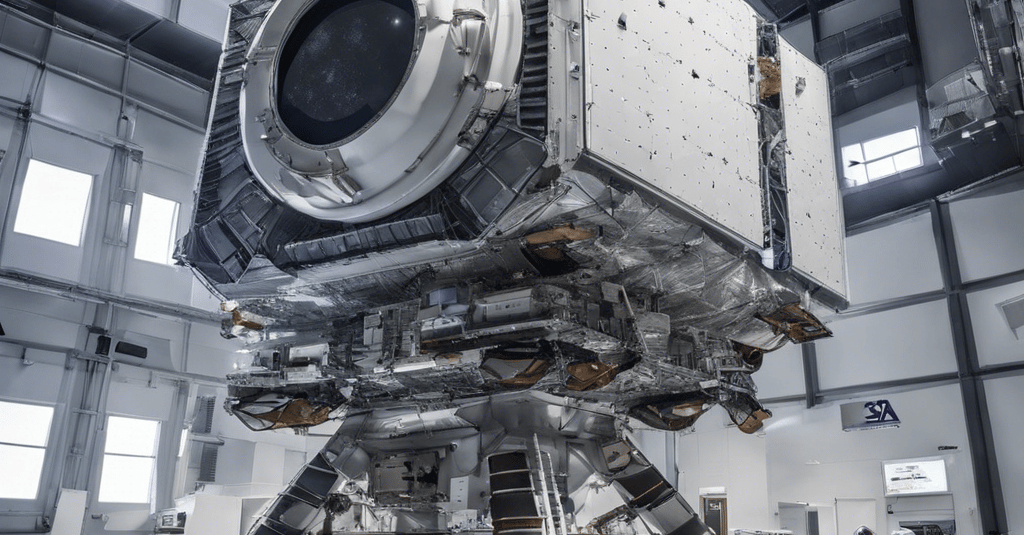
ESA’s new ‘Moon on Earth’ can launch a ‘European renaissance’ in spacetech
Startups are already testing their tech in the LUNA simulator
ENTERTAINMENT
crazybaba.in


A new re-creation of the Moon on Earth has sparked hopes of a “European renaissance” in space.
Known as LUNA, the futuristic facility was inaugurated today in Cologne, Germany. The ceremony showcased several striking features, from a 700-square-metre replica of the lunar surface to a Sun simulator that mimics the Moon’s phases.
Also in the pipeline are a gravity offloading system and an adjustable ramp that simulates lunar slopes.
Operated by the European Space Agency (ESA) and the German Aerospace Agency, the site offers realistic conditions for space-tech R&D.
A ground-breaking facility named Luna has officially opened today in Cologne, Germany, igniting hopes for a "European Renaissance" in space exploration. This innovative centre features a stunning 700-square-meter replica of the lunar surface, allowing researchers and enthusiasts alike to experience a taste of the moon's environment. Additionally, a state-of-the-art sun simulator has been installed to replicate the moon's phases accurately, enhancing the realism of lunar simulations. Future developments include a gravity offloading system and an adjustable ramp that will mimic the slopes found on the moon, further supporting advanced research. Operated by the European Space Agency (ESA) and the German Aerospace Agency, Luna aims to provide unparalleled conditions for the research and development of space technologies, paving the way for future missions and breakthroughs in the field of space exploration.
Start-ups are already testing their tech on the site. Among them is Spartan Space, which is developing a lunar base camp.
The camp is designed as a payload that spacecraft can robotically land on the Moon. Astronauts would then head towards the base from their initial landing spot, extending their adventures across the lunar surface.
But first, Spartan Space must prove the camp is fit for purpose. “For this, we need LUNA,” said Peter Weiss, the French firm’s co-founder and CEO.
“We can put our habitat in there and test robotic operations. We also planning to test it with astronauts.”
Weiss has high hopes for LUNA — and not only for his start-up. He believes the site can underpin “a renaissance in European space exploration.”
Such a boost can’t come soon enough.
The Moon is
The Moon, Earth's only natural satellite, is a captivating celestial body that orbits our planet at an average distance of approximately 384,399 kilo-meters. It plays a crucial role in influencing Earth's tides and has fascinated humans for centuries. Interestingly, the Moon rotates on its axis, but it does so in a way that it always presents the same face to Earth—a phenomenon known as synchronous rotation. This unique alignment allows us to observe various features, such as craters and maria, from our vantage point. The Moon's surface is a barren landscape, marked by impact craters and dust, making it a subject of scientific study and exploration. Its cycles, from new moon to full moon, have inspired countless myths and cultural practices throughout history, solidifying the Moon's place not just in the sky, but also in human imagination.
The moon, Earth's only natural satellite, formed approximately 4.5 billion years ago, likely resulting from a colossal collision between the early Earth and a Mars-sized body. Its gravitational pull significantly influences our planet's tides, creating rhythmic rises and falls in ocean levels that have guided human activities for centuries. Solar and lunar eclipses occur due to the alignment of the Earth, moon, and sun, with lunar eclipses happening when the Earth casts a shadow on the moon, and solar eclipses occurring when the moon covers the sun. Throughout history, lunar exploration has captivated humanity, from early telescopic observations to the Apollo missions that landed astronauts on the lunar surface in the 1960s and 70s, expanding our understanding of the moon's geology and history. Today, as we look to the future, renewed interest in lunar missions points to a new era of space exploration.
In the new race to the Moon, Europe has fallen behind the US and China. LUNA provides a chance to catch up.
The site will facilitate research, development, and integrated testing of lunar technologies. Space agencies, researchers, and businesses can all access the facilities.
Josef Aschbacher, ESA’s director general, said the site places Europe “at the forefront of lunar exploration and beyond.”
Space-tech funders are also upbeat. Lucas Bishop, an associate at investment firm Seraphim Space, called the site’s inauguration “a significant milestone for Europe.”
“As we progress towards establishing a self-sustaining lunar economy, testbeds like LUNA will be indispensable for testing and refining new technologies and concepts,” Bishop told TNW.
For Europe’s start-ups, the simulator offers a promising launchpad. By demonstrating their tech in a realistic environment, they can prove the systems work and attract worldwide partners.
Weiss wants them to carve unique niches. “Everybody is concentrating on bringing astronauts to the lunar surface,” he said. “Europe should bring auxiliary elements — what I call the lunar logistics.”
These logistics are diverse. Deep lunar exploration will require a dizzying array of tech, from robotic landers and lunar rovers to oxygen production and energy storage.
Many of these systems could eventually return to Earth. But for now, LUNA will focus on the cosmos — and so will Weiss.
“Europe needs to go to the lunar surface,” he said. “LUNA is a gateway to that.”
Post By :- crazybaba.in
